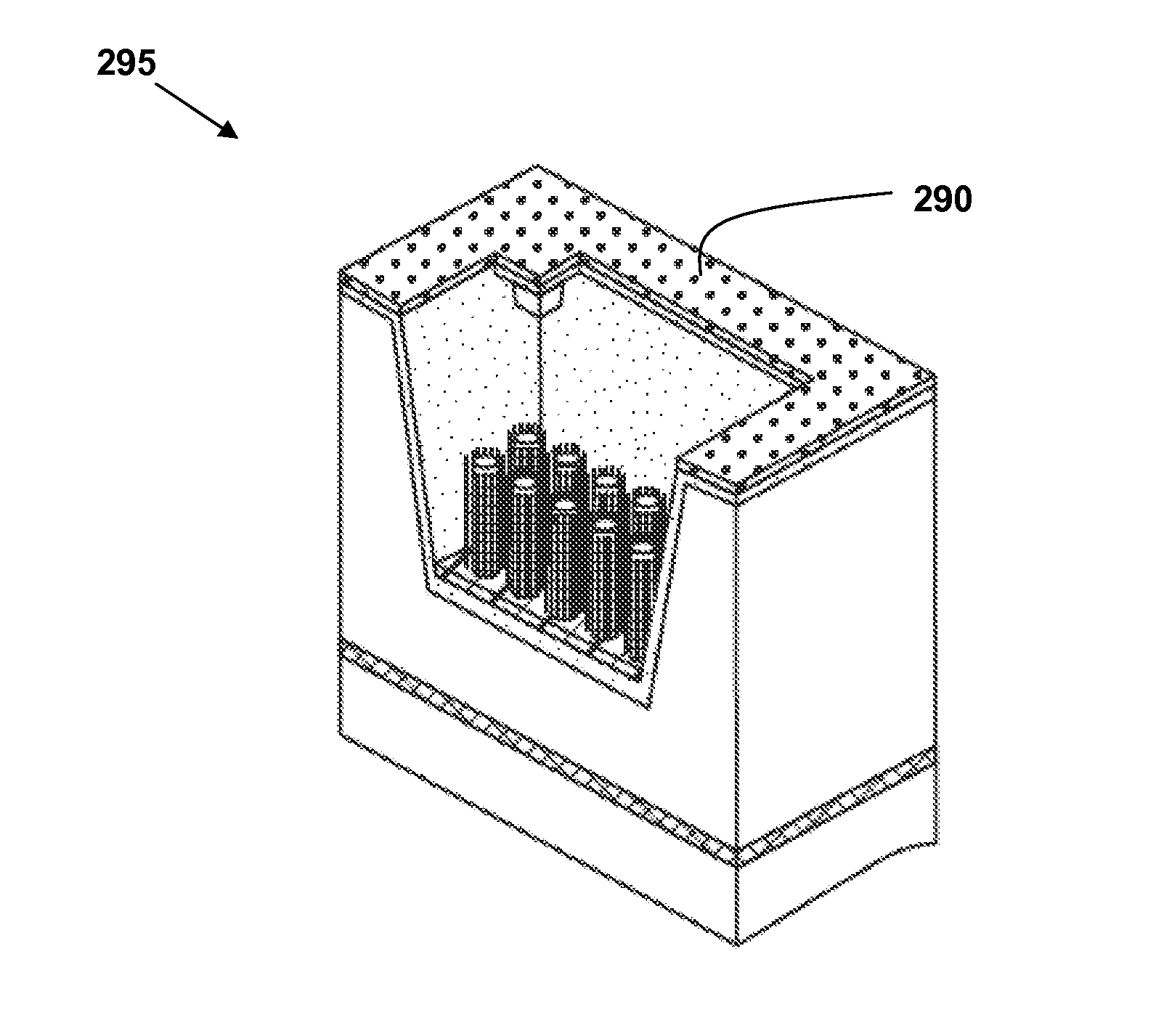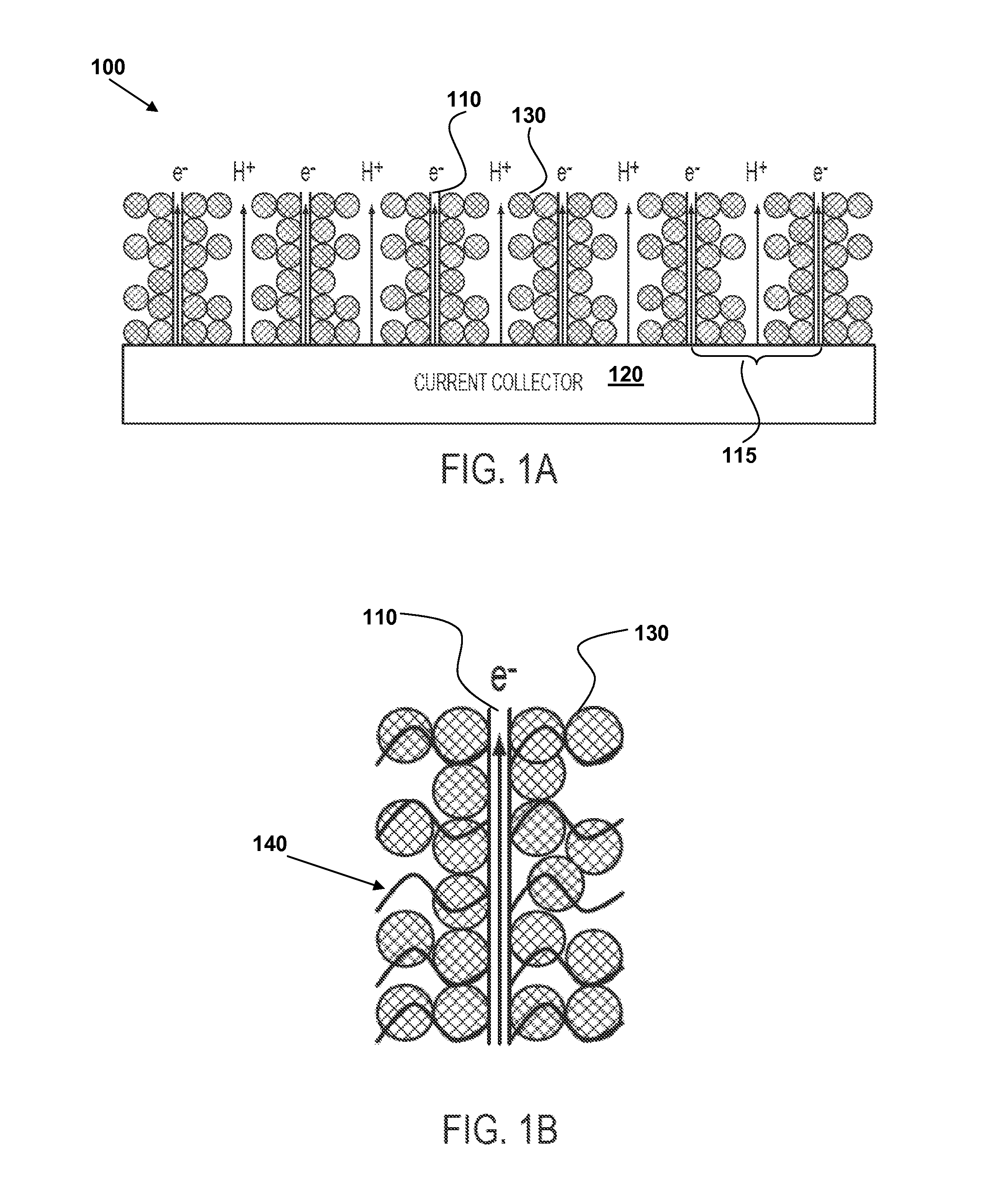Supercapacitor cells and micro-supercapacitors
a supercapacitor and micro-supercapacitor technology, applied in the direction of electrical apparatus casings/cabinets/drawers, electrical apparatus casings/cabinets/drawers, etc., can solve the problems of short charging time, high cycling stability, and long shelf life of supercapacitors
- Summary
- Abstract
- Description
- Claims
- Application Information
AI Technical Summary
Benefits of technology
Problems solved by technology
Method used
Image
Examples
Embodiment Construction
[0077]The apparatus, devices, systems, and methods of the present invention will now be described in detail by reference to various non-limiting embodiments, including the figures which are exemplary only.
[0078]Unless otherwise indicated, all numbers expressing dimensions, capacities, and so forth used in the specification and claims are to be understood as being modified in all instances by the term “about.” Without limiting the application of the doctrine of equivalents to the scope of the claims, each numerical parameter should at least be construed in light of the number of reported significant digits and by applying ordinary rounding techniques.
[0079]As used in this specification and the appended claims, the singular forms “a,”“an,” and “the” include plural referents unless the context clearly indicates otherwise.
[0080]Some variations of the invention utilize a composite structure 100 for good energy and power density in a supercapacitor, as depicted in FIG. 1A. In these variat...
PUM
| Property | Measurement | Unit |
|---|---|---|
| length | aaaaa | aaaaa |
| temperature | aaaaa | aaaaa |
| outer diameters | aaaaa | aaaaa |
Abstract
Description
Claims
Application Information
 Login to View More
Login to View More - R&D
- Intellectual Property
- Life Sciences
- Materials
- Tech Scout
- Unparalleled Data Quality
- Higher Quality Content
- 60% Fewer Hallucinations
Browse by: Latest US Patents, China's latest patents, Technical Efficacy Thesaurus, Application Domain, Technology Topic, Popular Technical Reports.
© 2025 PatSnap. All rights reserved.Legal|Privacy policy|Modern Slavery Act Transparency Statement|Sitemap|About US| Contact US: help@patsnap.com



